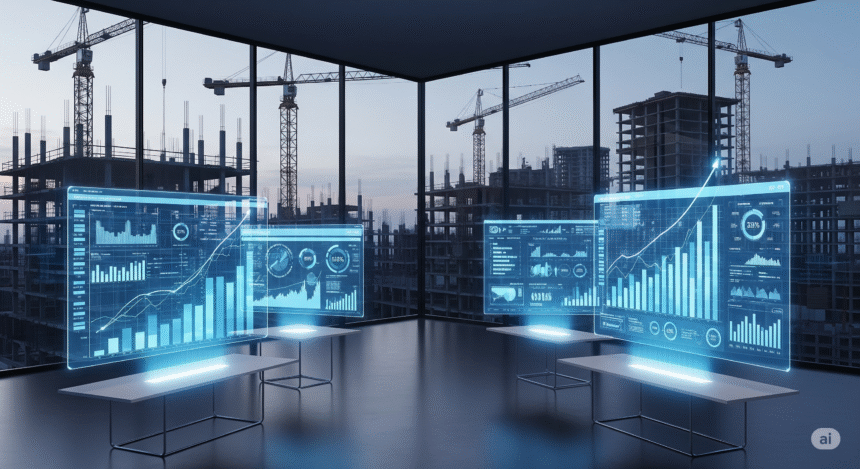The virtual construction field, sometimes called virtual design and construction, has been expanding swiftly in recent years. This rise reflects the growing use of digital environments to simulate building projects before ground is broken. These tools include Building Information Modeling (BIM), virtual reality, augmented reality, and construction management platforms.
Why It’s Accelerating So Fast
One core advantage of virtual methods is the reduction in costly mistakes. Reworks due to design errors cost the industry nearly 30 percent of its budget. Digital planning helps identify issues early by letting stakeholders walk through a virtual version of the project. This clarity saves time and money.
Advances in BIM, VR, AR, and cloud-based platforms are making virtual construction more powerful. These tools allow real-time collaboration, immersive visualization, and early-stage clash detection between different design disciplines. They help design and build more efficiently.
Regional Leaders and Drivers
North America currently leads adoption of virtual construction methods, aided by strong construction spending and technology uptake. It holds over 30 percent of the VDC-related market and dominates in BIM and VR investments.
Asia‑Pacific is showing particularly rapid growth. Urban expansion in China, India, and Southeast Asia is driving demand for more efficient infrastructure. For example, India invested about 5.3 percent of its GDP in infrastructure in 2024, and is expected to reach 6.5 percent by 2029, which boosts demand for digital construction tools.
Further north, major markets like Europe are increasing the use of VDC through public projects, sustainable construction initiatives, and tighter efficiency standards.
Key Benefits Driving Adoption
Better planning, early error detection, and coordination are among the biggest benefits. VDC methods reduce redrawing, clash resolution, and costly onsite changes.
Improved safety and training also matter. Virtual reality can simulate dangerous environments and tasks so workers can train without risk. This lowers accidents on real job sites.
Greater client participation is a plus. Virtual walkthroughs engage clients deeply, and many make design decisions earlier, reducing change orders and shortening timelines.
Cost efficiency comes from reducing rework, accelerating approvals, and minimizing delays. Once set up, virtual workflows streamline project phases.
Challenges and Emerging Opportunities
Despite its promise, virtual construction still faces hurdles. Initial investment in software, hardware, and training can be steep, especially for smaller firms. Some hesitate over integration with legacy systems or worry about technical compatibility.
Data privacy and security also raise concerns. Firms handling sensitive project designs must be confident about protecting their digital materials. Data governance and compliance policies are vital.
Yet the integration of artificial intelligence with VDC remains a growing opportunity. Smart systems that predict scheduling delays, forecast costs, or automate quality checks could transform how projects are managed.
Industry reports indicate AI in construction is expected to grow from about USD 2.93 billion in 2023 to USD 16.96 billion by 2030, at a CAGR of nearly 27 percent. When paired with virtual design, such technologies can power advanced simulations and decision support tools.
Looking Ahead: What is the Future of Virtual Construction
Over the coming years, VDC and virtual construction tools are likely to become standard practice. As cloud platforms become more accessible, even smaller contractors will adopt these methods. Interoperability between BIM, VR, AR, and project management tools will improve.
Advanced analytics and digital twins, virtual replicas of physical buildings, will enable real‑time monitoring, maintenance simulations, and ongoing optimization. The digital‑twin market alone is forecast to grow robustly through 2030.
In regions with rising urbanization and infrastructure demand, like the Asia Pacific, adoption will expand further as large-scale projects seek efficiencies. Meanwhile, sustainability goals and labor shortages will push more firms toward virtual methods that reduce onsite waste and dependency on manual labor.
The virtual construction market is no longer a niche trend; it is reshaping how buildings are imagined, planned, and built. Virtual design tools, BIM, AR/VR, IoT, and AI are converging to deliver clearer communication, fewer mistakes, faster timelines, and stronger safety. While early setup costs and technical hurdles remain, the long‑term return on efficiency and project quality makes virtual construction an attractive route for forward‑looking firms.
Across North America, Europe, and the fast‑growing Asia‑Pacific region, this growth shows no signs of slowing. As tools become more affordable and integrated, the construction industry may soon find that analog drawings feel outdated, replaced instead by immersive, data‑rich, and highly collaborative virtual planning spaces.







